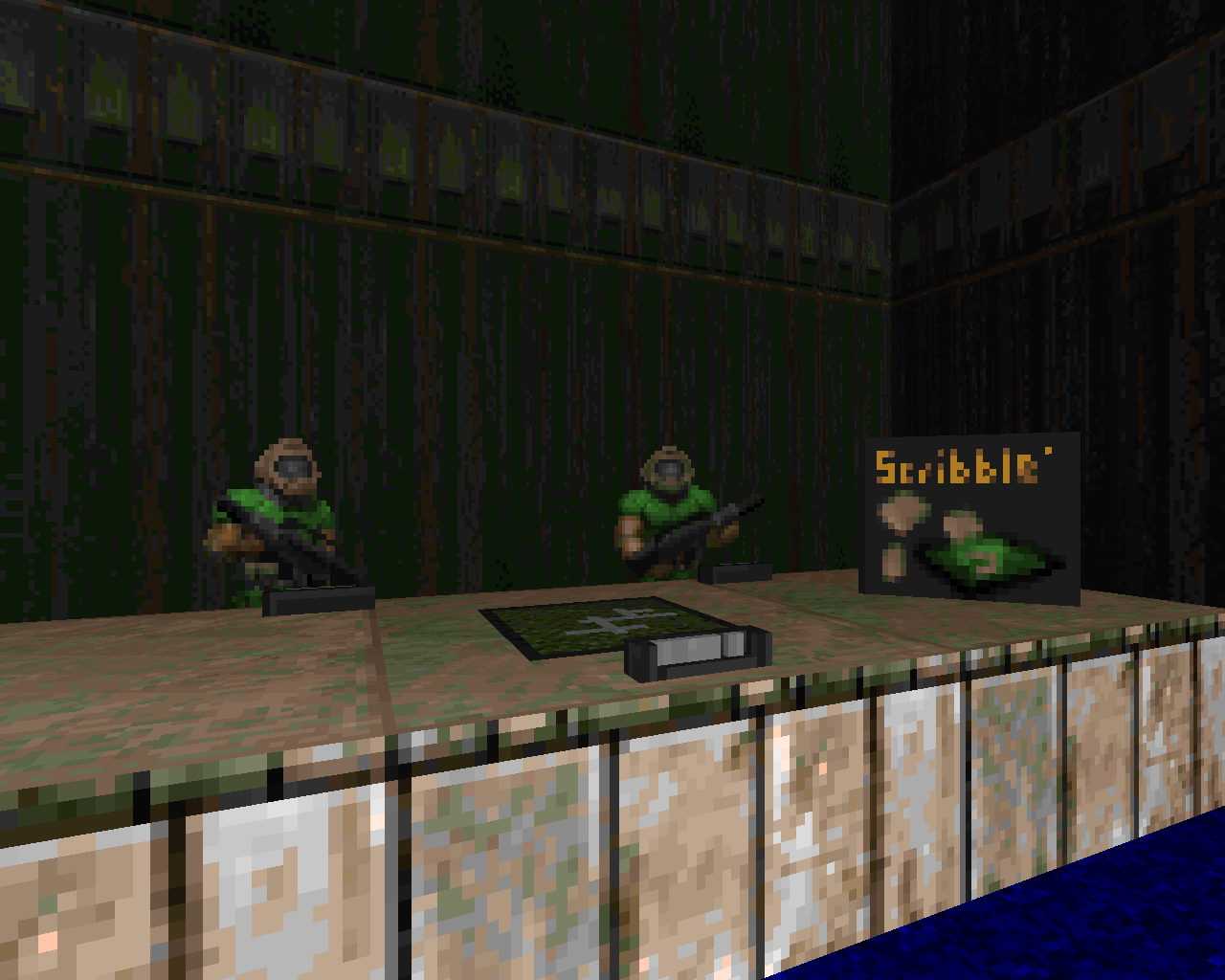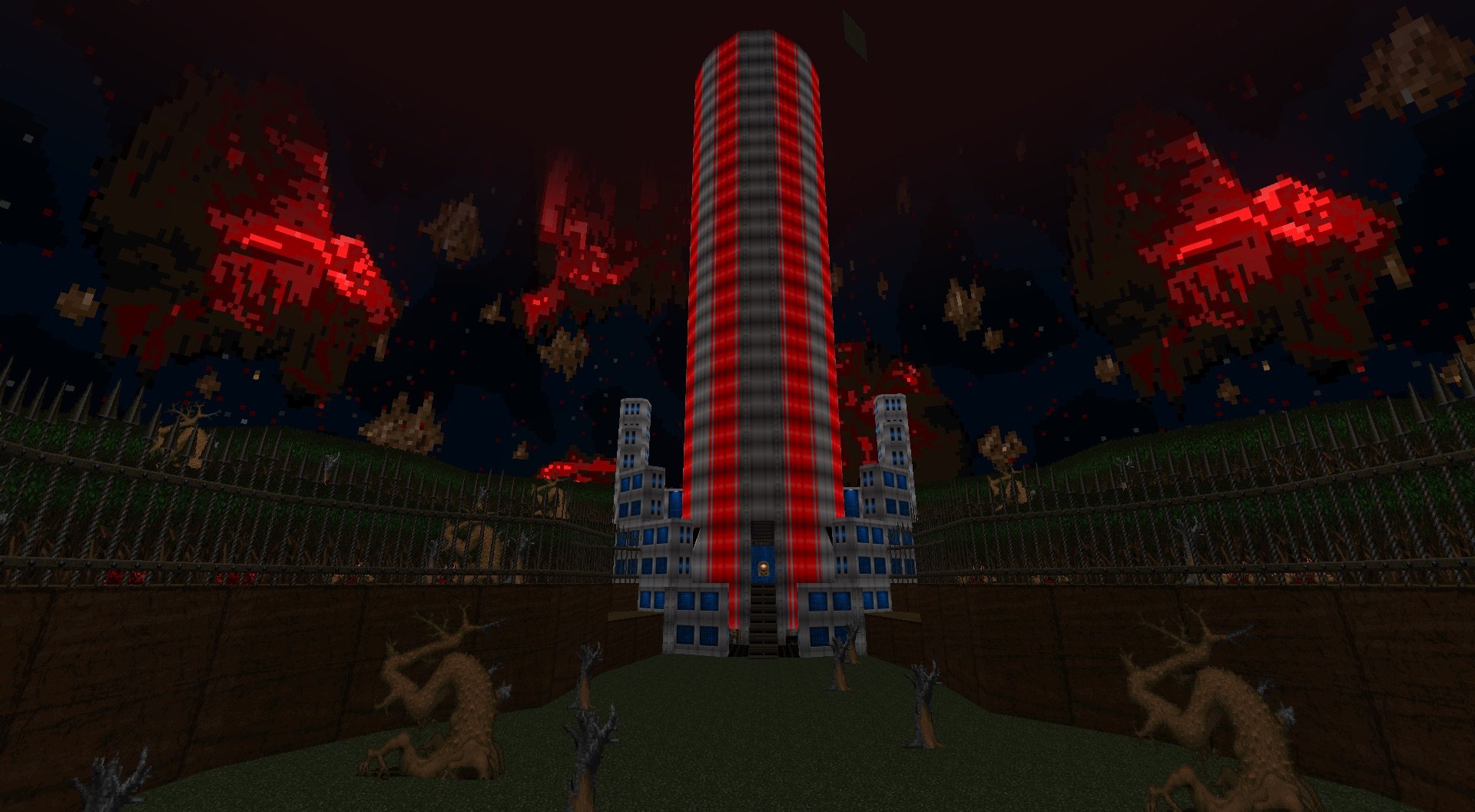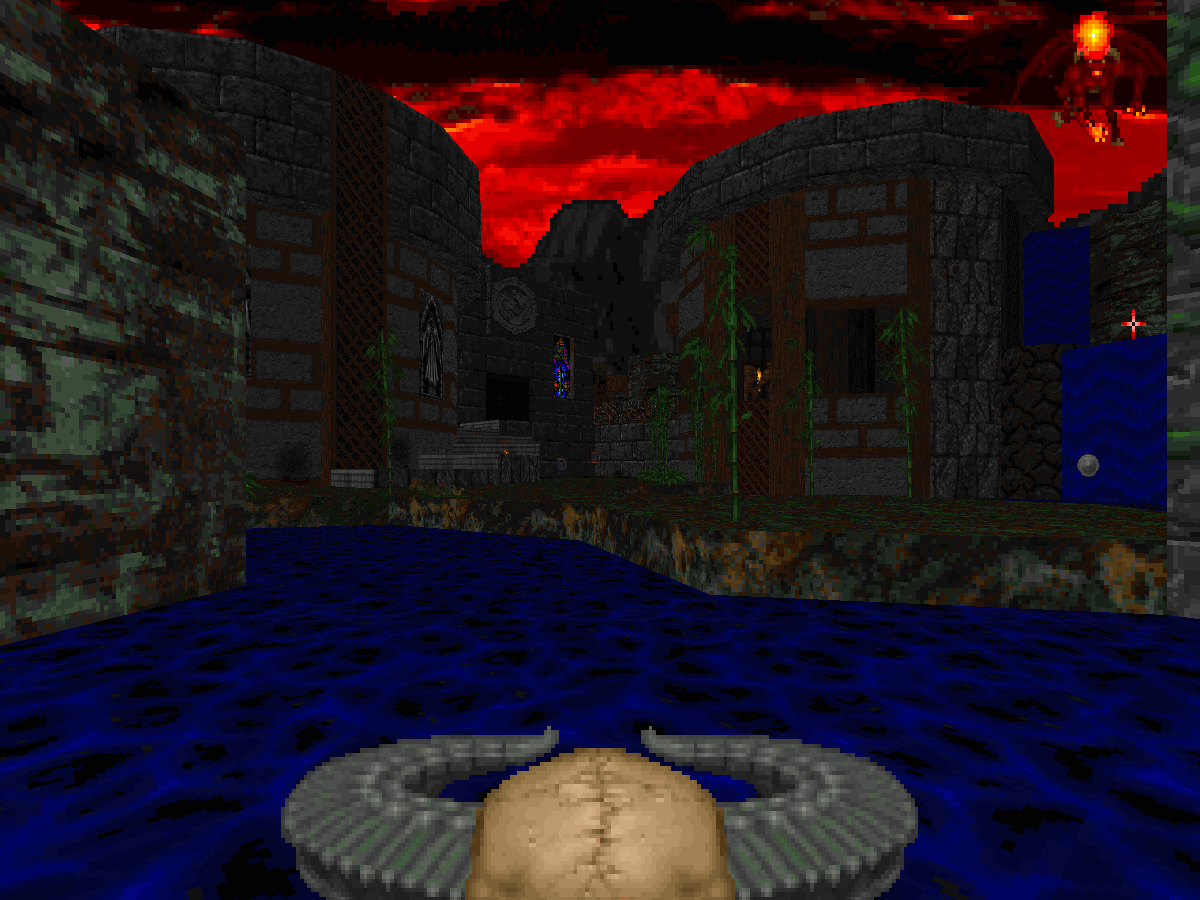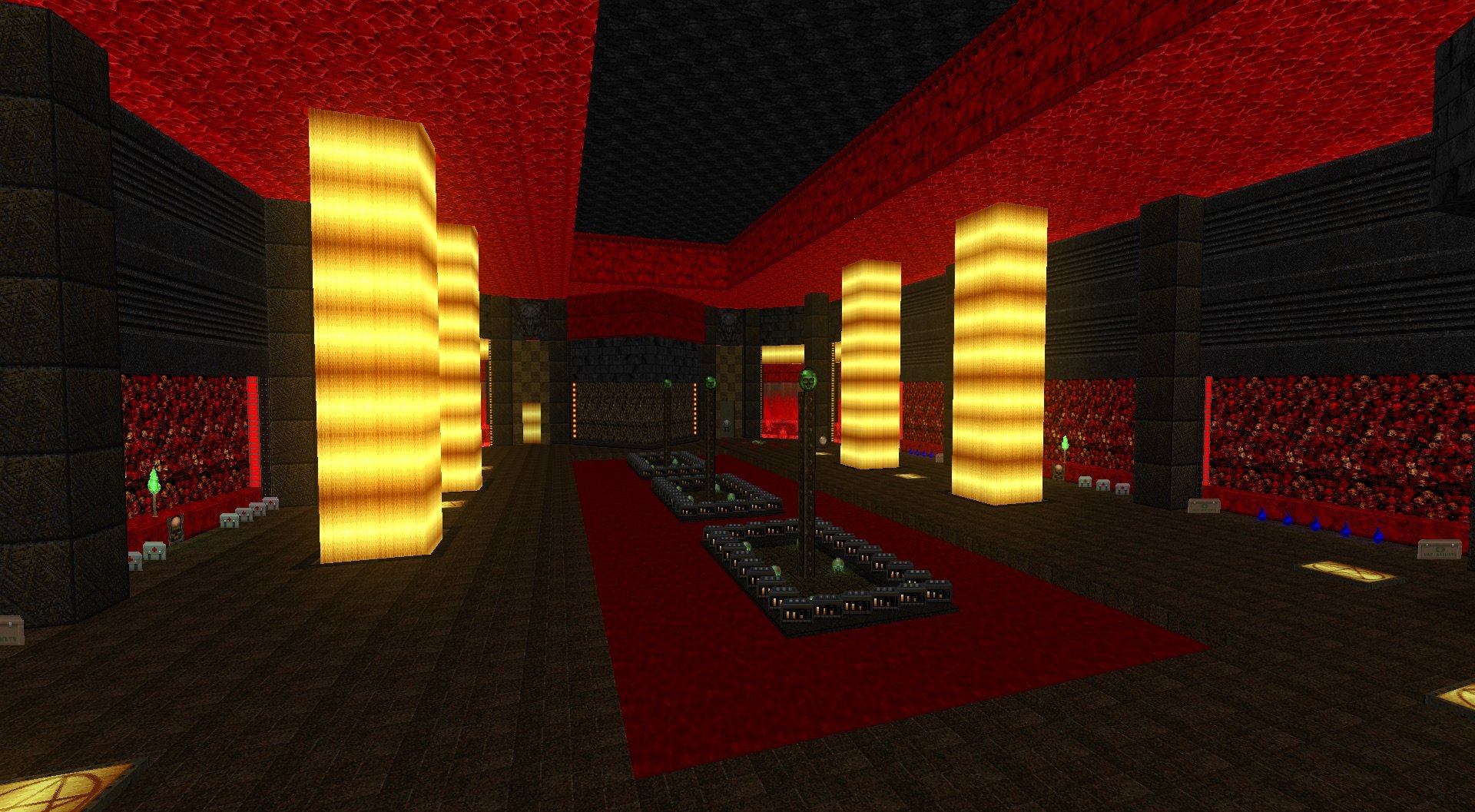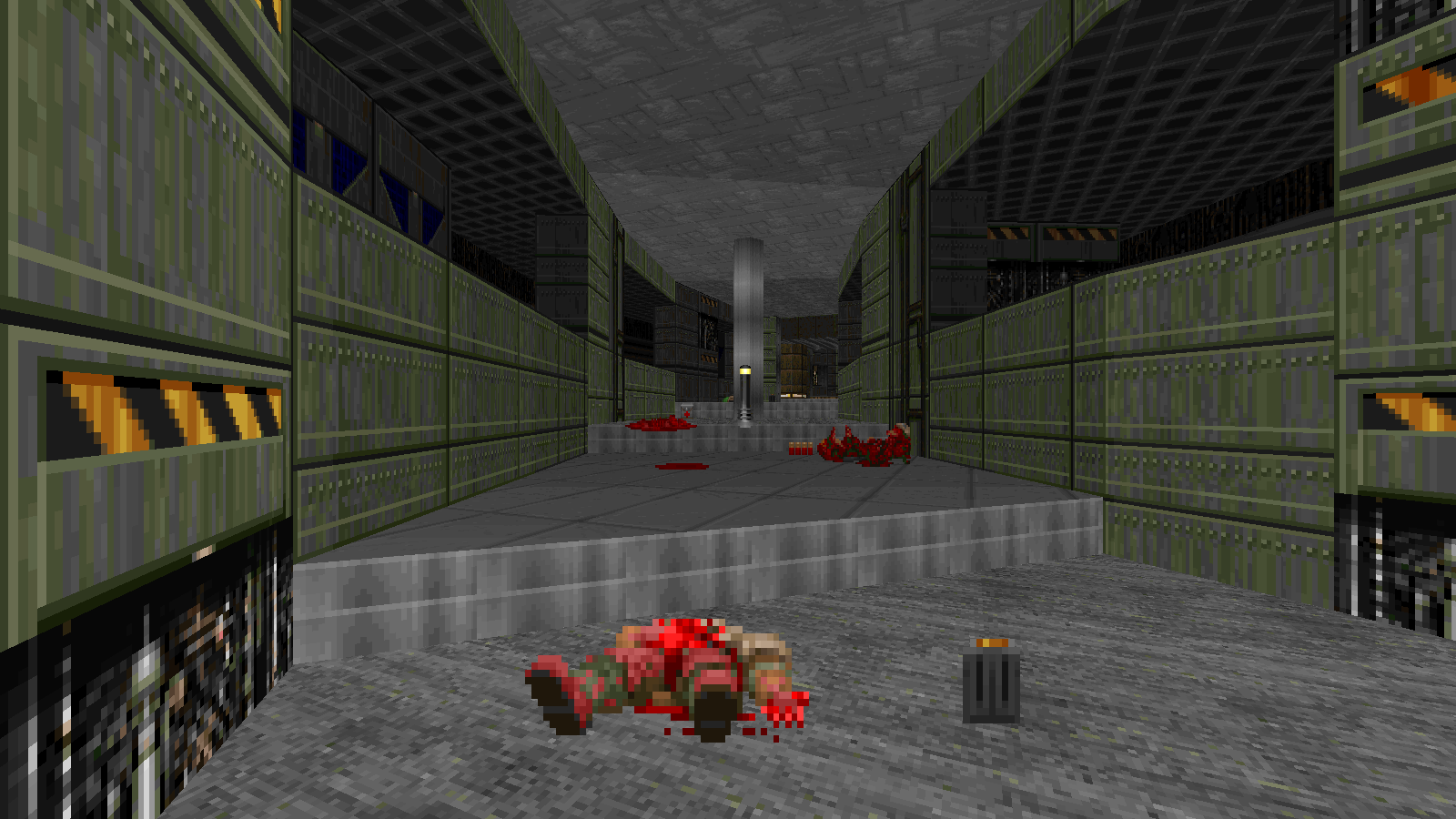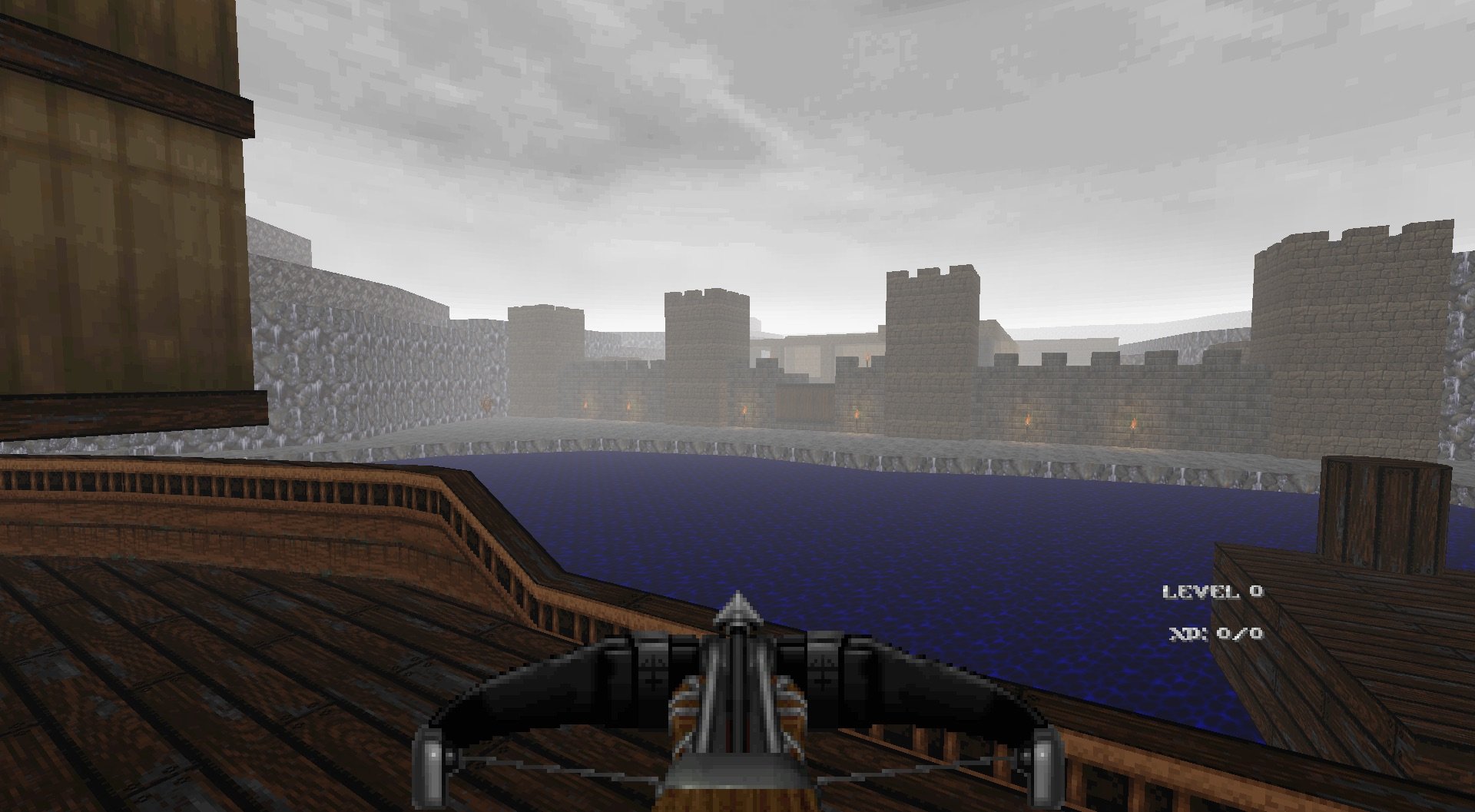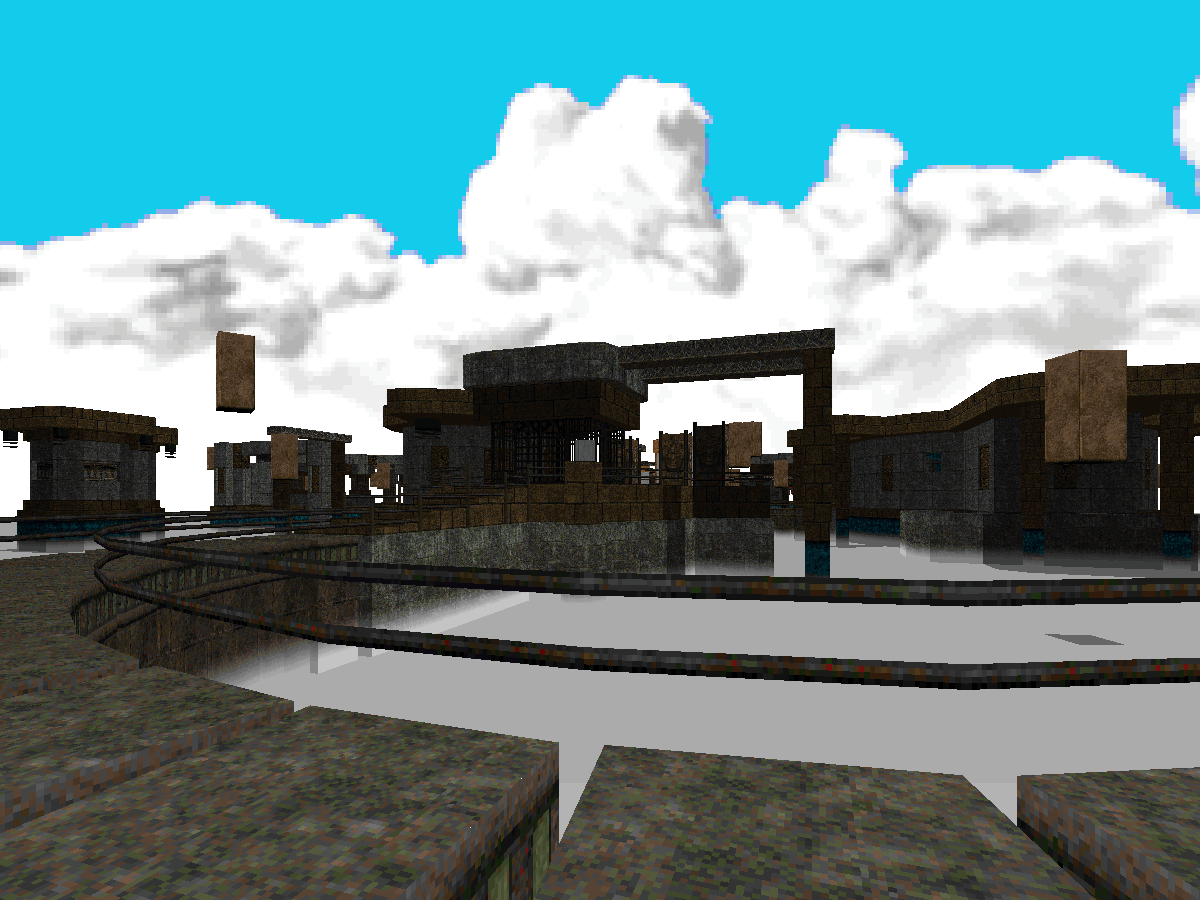-
Doom 2, vanilla-compatible, 32 maps
Playing games like Doom, it’s easy to imagine yourself as a lone survivor, a killing machine with nothing to lose and no goal but revenge. But when the apocalypse hits and your friends are sitting across the table from you, are you going to have their back?
Three Is a Crowd starts off with a trio* of protagonists who happen to be playing off-brand Scrabble when the demons come knocking. You eventually step into the shoes of all three soldiers as they set off on different paths, each one driven to save the other two and all of them willing to go to any lengths for the sake of friendship. The narrative that unfolds is sometimes goofy, sometimes heartwarming, sometimes tragic, sometimes driven by tense rage and sometimes by terror, all of it delivered with a knack for storytelling that rivals anything in Going Down or A.L.T. Every time your characters cross paths is like a moment you’ve been waiting for all your life, and even the Icon of Sin is a genuine character, appearing again and again to counter your strategies at every turn until its last card is played.
In the process, the megawad throws out every convention in the playbook. The first protagonist cockily grabs all the weapons in the armory, but then promptly loses them in an interdimensional gateway and is forced to tackle a map that includes no weapons or ammo whatsoever, followed by one that revolves around the rocket launcher in close quarters. The dramatic hostility of the first five maps or so will threaten to turn many players away, but I recommend sticking it out and appreciating the rough parts from a story perspective; the rest of the megawad just gets better and better. By map 06, as you watch an entire building rise out of the ground, make a D-Day run on a turreted Mancubus through a field of obstacles, brave a rooftop duel with a Cyberdemon, and catch your first of many glimpses of the architect of all your suffering, you start to realize the mapper is really on to something. Before the final rocket lands, you’ll ally with an Imp, navigate a nearly invisible otherworld where paths unfold out of thin air, and chase after a door that won’t stop running away from you. There’s a map where everything plunges into darkness unless you keep hitting the pads that turn the lights back on, and another where the exit is accessible right at the start, but you have to deal with the whole rest of the map just to be able to survive it. Sometimes the quirks are just silly goals the author set to spur their creativity, like “what if there were seven doors on one wall and only one other exit?”
Although its difficulty curve is anything but linear and a handful of maps are strikingly sadistic, the vast majority of the megawad is as fun as it is dramatically engaging—and it’s always at least one of the two. Any mapset that can be this whimsical and silly and deadly serious and tear-jerkingly emotional all at the same time is a winner in my book. 3IaC is the rarest of PWADs—one that explores the territory beyond “level design” in a meaningful way, that delves into a broader range of feelings and experiences rather than trying to give players more of what they think they want. Because life isn’t just about slaughtering demons: it’s about the people you love, the frustration of things not going according to plan, the feeling of victory that comes after real struggle, the sacrifices you’re willing to make, and the games of Scrabble you play along the way.
* or triad, if you prefer that interpretation.
-
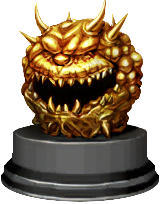 Syringe - @Pavera, @Tarnsman, @Marcaek, @Xaser
Syringe - @Pavera, @Tarnsman, @Marcaek, @Xaser
Doom 2, limit-removing, 6 maps
You wake up amongst blood and chaos in a dying universe. It’s up to you to bring the demons down and this vast expanse of insanity back to life.
Syringe is a set of seven limit-removing maps, containing all types of realms from the mundane to the insane. From forests to bloody bases to void-esque asteroid fields, the terrain is vast and filled to the brim with danger at every twist, turn, and dark corner imaginable. The behemoth red towers watch you closely, unblinking, as you maneuver your way to the heart of all this darkness, to give it the injection this world needs to revive. Each map tells a story of its own while telling of a much larger and scarier world—the use of almost deconstructive techniques give a sense of reality being bent and crushed around you, the walls becoming bloodier—if the walls are even there.
Syringe is the brainchild of four titans of the mapping scene: Pavera, Marcaek, Tarnsman, and Xaser. Off the bat, Xaser’s signature font featured in dead.air and dead.wire hints that reality will be bent quite quickly in the best and worst ways possible, and his love of tall (and moving) towers explored most recently in Eviternity make a fabulous comeback. Pavera’s classic story-telling sensibilities illustrated in BTSX E1 and D2TWiD shine through once again in the lava-filled “Hell Spoke,” and a Plutonia-style winding base labeled “Banana Export.” Tarnsman, also part of the BTSX and D2TWiD gang and more recently, Adventures of Square, lends his signature style to the bloody introduction “The Well” and the arboreal jungle adventure “The Undergrowth.” Last but not least, Marcaek, mastermind behind the 50 Shades of Graytall project, lends his experienced hand to the memorable combat of “Acheron’s Needle.”
No part of this map set may be classified as gentle—indeed, every single map is brimming with dangerous, intense encounters that keep you thinking on your feet. But akin to frogs being boiled in a pot of water, it’s a strong, steady crescendo. It’s essential to be aware of what's around you at all times in this set, especially among the jagged, floating towers of the later space maps. All this builds up to quite a memorable and intense end map, forcing the player to move fast on their feet to avoid the already bloodied crushers as they warp through time and space, leading to a battle between the great Cyberdemon and Spider Mastermind—but how one would wish that was all there was to it.
All in all, Syringe is a great injection of new-school ideas into old-school Doom gameplay, and is a fantastic journey to bend the mind and treat the senses. These days, it’s a welcome disconnect from reality, even if it’s a short but potent dose.
-
Heretic, GZDoom, 28 maps
Jimmy's design process for Faithless Trilogy was well documented. He carefully picked out elements from Heretic and Hexen, gave it some thought—and then chucked them in a cauldron in the spooky gothic castle he lords over. After reading from a spellbook and tossing in a rat or two for flavor, the pulsing, glowing mass was finally downloaded onto a USB stick, where it became a trio of hub-based Heretic episodes that builds on the stronger aspects of both games.
Heretic, for example, had an amazing idea with the Morph Ovum, a rare artifact that can transmogrify a pack of intimidating foul-breathed beasts into small clucking chickens (be cautious, they can still peck you for like 1 damage). Faithless Trilogy makes this even better—it's now a common artifact.
Hexen puzzles often conjure horrific notions of endless switch hunts, not to mention repeated jokes like "you have solved 1/2000th of the puzzle." Jimmy wants you to succeed. His puzzles are rarely arcane or padded, and convenient messages signpost cause and effect across distant hub-linked maps.
The original games, especially Heretic, had a limited range of themes, but the realms of Faithless Trilogy expand on the gloomy dungeons and stone fortresses with a wider assortment of elegantly crafted medieval-mystical settings. As a taste, you travel through farm villages with coops of chickens (probably Morph Ovum victims in a past life), peaceful mountain lands with bamboo and chirping birds, vibrant elemental realms with rivers that glow as if enchanted—with new enemies, themed to fit, adding to the Heretic and Hexen cast.When the trilogy swings into full gear in the second episode, Merciless, you are fighting in chambers of gold coins, panic-dodging Iron Lich tornadoes as your footfalls clink metallically. You don't just find switches to progress; you smash huge musical gongs and light fires and freeze blocks of melting ice. You are keeping an eye open for puzzle totems like gears to repair machinery, for keys that unlock optional chests that give you powerful items—which includes lots and lots of new artifacts that jell excellently with the originals. I haven't even gotten to the new weapons. I'll tease you: later on, you gain the ability to spawn a friendly transient army to shred your enemies. For every moment you're embroiled in a frantic battle—chased by a raving mob out to slice or roast or poison or freeze you, desperately evading a speedster miniboss with its lethal, colorful attacks—there is a moment of quietly retracing your path through the wildlife and the weather, or piecing the scraps of a puzzle or progression together. Your best tool isn't always one of those big enchanted rods stuffed in your cloak; sometimes it's your noggin.
This blend of experiences, from slow burns to intense firestorms, is Faithless's signature, and its artful orchestration is the source of its best stretches. The appeal becomes beautifully clear in episode two's hub map, an iron stronghold that dwarfs you and fills you with a cosmic sense of biting off more than you can chew. Secrets could hide behind every musty bookshelf. Balconies loom alarmingly high overhead. Great gates block off caves that branch endlessly through slime and shadow. Like much of the trilogy, it's engineered not just to be dramatically conquered, but to be methodically unraveled.
- @rd.



